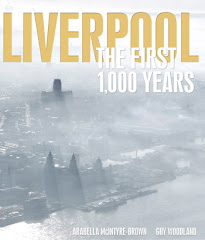
Until the mid 1700s the roads to Liverpool were impassable to anything but riders and packhorses. Until 1760 the nearest a coach could get to Liverpool was Warrington – then passengers had to find other means of travelling on to the port. Packhorses carried goods between the port and inland towns, along muddy lanes and moorland tracks. It was a slow, cumbersome and expensive process – no wonder that Liverpool didn’t really start to develop as a port until overland transport improved. After much badgering from frustrated merchants, Parliament finally gave permission to
local councils to build roads and collect tolls, and the network of turnpike roads grew.
The first in this area was from Liverpool to Prescot, opened in 1725; it was more than 25 years before the road was extended to Warrington to join the road network. Turnpike committees were corrupt, tolls were high and the state of the roads still poor. As late as 1788 a train of 70 packhorses set out daily from Dale Street to Manchester, trailing along Edge Lane, over Old Swan Hill, through Oak Vale and over Broad Green Moor.
It must have been an exciting moment when, on 1st September 1760, the first stage coach – the Flying Machine – left the Golden Fleece in Dale Street. Then it took four days to get to London but before long the competition drove down the journey time, and by 1785 coaching inns were advertising Liverpool to London trips in 26 hours.
The first mail coach service was run that year, on 25th July, leaving for London from the Golden Lion at 4am. The advertisement said: ‘To go in 30 hours: fare £3 13s 6d.’ Mail coaches carried only four passengers, the coachmen and an armed guard to fend off highwaymen…..
Henry Booth was an engineer and part of one of Liverpool’s big merchant families; he had no doubt by 1824 that the railway was the future. Opposition to the railway was fierce, even vicious – surveyors planning a rail route to Manchester had to be protected from the angry locals by hired bruisers, and Liverpool’s pro-railway lobby was mugged at every turn by influential canal owners, road trustees and landowners. A declaration was signed by 150 Liverpool men – including a Rathbone, a Gladstone, and a Ewart, that ‘new means of communication were indispensable’.
Booth’s foresight was remarkable, but even he was probably astonished at the speed and spread of the radical changes in society that the railway age was to bring….
The 2,000-acre Port of Liverpool is busier now than ever, and one of the fastest-growing in Europe. Liverpool is the largest UK importer of grain, the largest exporter of scrap metal, and the leading timber port since about 1283 (when timber from Gill Moss forest was taken to Wales by pyckard boat to build Caernarvon Castle). 400 years ago, however, there was only the Pool – no harbour wall, no quayside, and no decent transport to and from the town – although there was a water bailiff as early as 1551 to stop congestion on the waterside.
The Mersey was once described as a ‘wild raging beast of a river’. It is not an ideal waterway, with a six-knot ebb-tide and constantly shifting sandbanks. It had a naturally deep harbour, but ships with cargoes to unload had either to anchor in the Pool in the lee of Liverpool Castle, or out in mid-river. In the Pool, ships would keel over at low tide unless propped up; anchored in mid-river they had to ferry loads back and forth from ship to shore…

1 comment:
Fascinating post - lots of great information.
I've just published a book on pub signs and pub history and mention in the introduction about the rise of the coaching inns and their subsequent decline.
In my book I mention the London-Birmingham route. In 1740 there was one coach a week between the cities. By 1783 it was 30 a week and in 1829, it was up to 34 a day – on this one route alone. And that's without factoring in the freight traffic and farm wagons.
Why do we complain so much about motorway congestion? It must have been just as bad back then!
Elaine Saunders
Author - A Book About Pub Names
www.completetext.com
Post a Comment